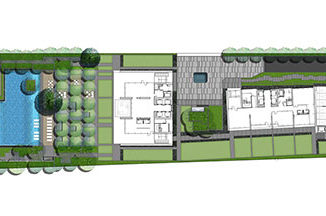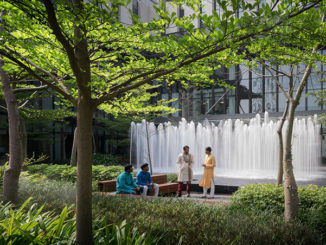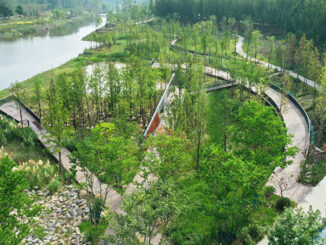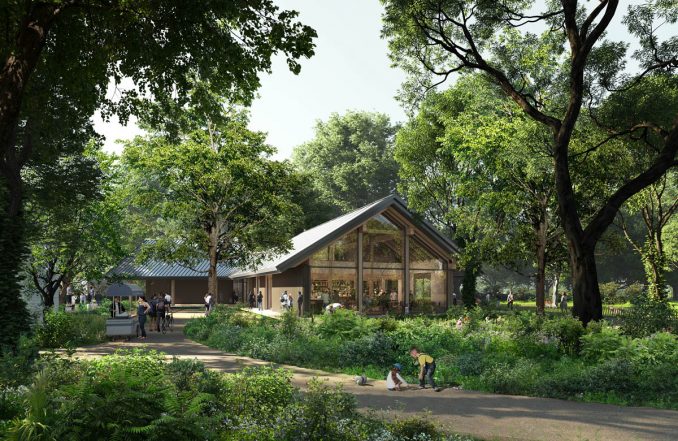
DELVA and Powerhouse Company are creating a new entrance to the ‘Hollandse Duinen’ National Park, which combines nature and architecture. The gateway, with its park and new visitor centre, settles in the Koekamp, a stone’s throw from the Koningin Julianaplein and the city centre.
The visitor centre and its park, which have been commissioned by the Dutch forestry commission (Staatsbosbeheer), are expected to be completed in 2024.
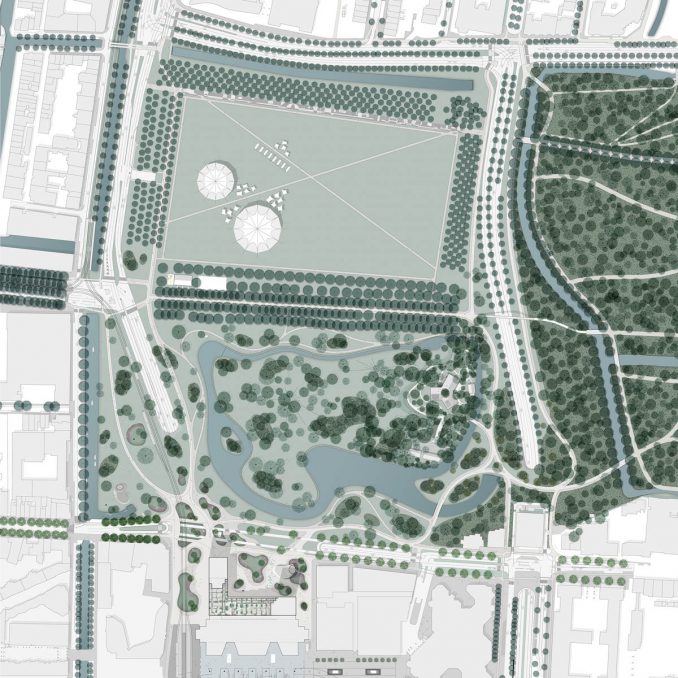
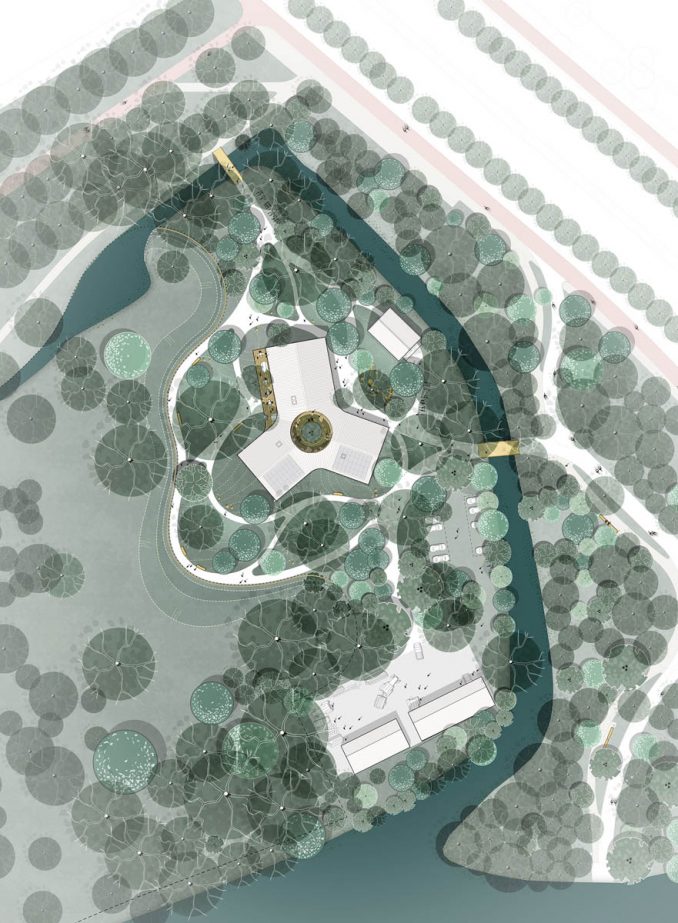
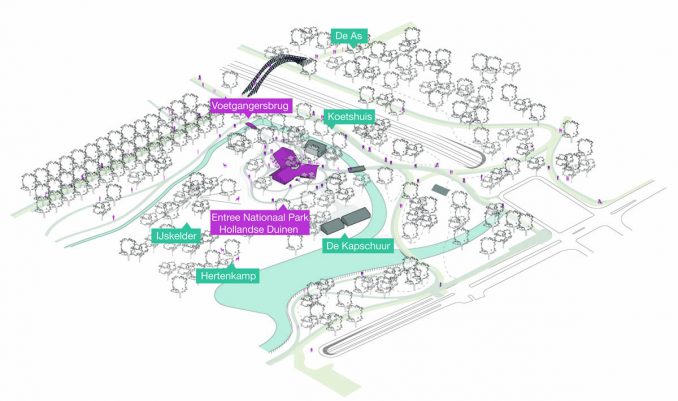
A green history
Just a stone’s throw from The Hague’s Central Station, Koekamp is a survival from medieval times: a cattle field turned deer park (Philip the Good brought the first deer here). It became a public landscape, popular for walks, from the early 17th century. Later, it was partly landscaped in the English landscape style by 19th-century landscape architect Jan David Zocher. Largely fenced off in more recent times, it has become more of a place to admire from a distance than to visit.
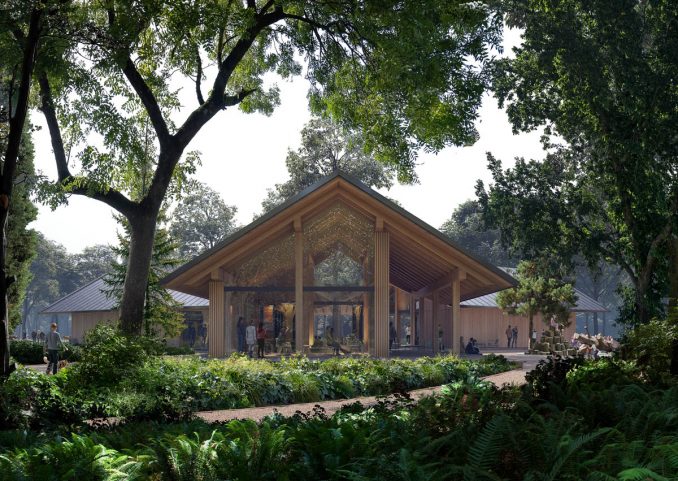
Today, Koekamp links the heart of the city and its train station to a network of green areas in The Hague and beyond, including the Malieveld, the Haagse Bos and the many miles of sand dunes along the coast. These diverse areas are now combined under the umbrella of a new national park, the Hollandse Duinen park. The new visitor center will be the park’s gateway, inviting people to explore part of the Koekamp, or venture further afield.
Natural highs
Koekamp is one of the four green spots of the Green Entrance: a new area of greenery around Central Station designed by DELVA, including KJ Plein (Koningin Julianaplein). In the plan, Koekamp will be bordered by the new Koninklijke Stadspark, a lush green park that will reveal the city’s diversity, as well as forming the gateway to the national park in the making. The contrast between these green landscapes in the heart of the city and the urban fabric is very pronounced, where the new visitor center will retain and enhance this contrast.
“We set out to create an entrance that is not just a building, but a landscape. The balance between architecture, programme and design of the park is essential here. Our inspiration was the past. Instead of repeating history, we lovingly adapted it and laid it back with respect for nature and within the design spirit of landscape architect Zocher.”
Steven Delva, DELVA Landscape Architecture | Urbanism
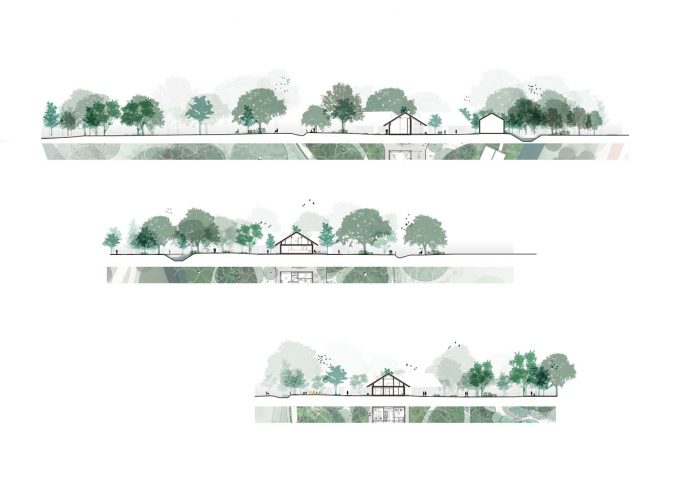
Koekamp will have stronger connections with the city and to the other green landscapes around it, including a new bridge which will better connect it to the park zone at Bezuidenhoutseweg. In addition to the existing entrance on the east side of the site, there will be an entrance in the form of a pedestrian bridge on the north side leading from the Malieveld. In the past, there was also an entrance on this side that connected to Koekamplaan: the royal, connecting road between Huis ten Bosch and Noordeinde Palace. By adding this second connection, the grounds become part of the walk around Koekamp envisaged in line with Zocher’s ideas.
The new entrance, with its flowing paths, connects seamlessly with the surrounding city park. The pleasant paths lead the visitor not only to the visitor centre but also to the edge of the deer park. From here, there is a wide view of the camp and the deer. In spring, this part of the park presents a scene of flowering ‘stinsen’ plants. These are bulbs that present a beautiful spectacle in spring and are typical for country estates and woody areas.
Design for trees
Koekamp’s monumental trees are leading in the design and will all be retained. They determined the site and size of the new visitor center. To avoid cutting them down, the architecture nestles among them. Three houses are positioned carefully in between the tree trunks under a unifying triple-winged roof that converges around a central, circular court that will accommodate another beautiful oak. The result is a design that is perfectly integrated in nature and is partly concealed by it.
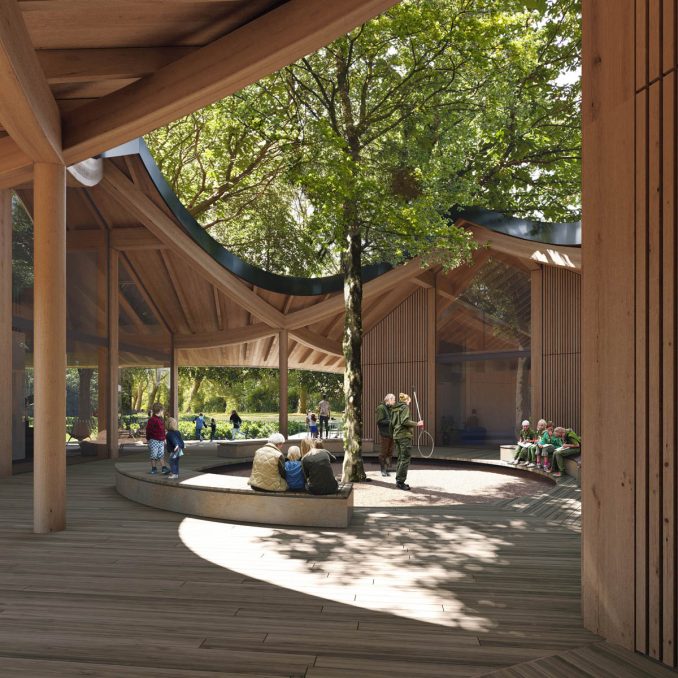
The two public wings house an information center to the south, where visitors can learn about the landscape and its long history, and a restaurant to the north. The central circular court forms an informal outdoor meeting space, with room for activities such as a play area. The third wing accommodates the offices of the forestry commission, which also offers workshop space in an old coach house nearby. Visitors will now be able to see and understand some of the foresters’ work.
New gateway to ‘Hollandse Duinen’ National Park
Landscape Architect: DELVA Landscape Architects Urbanism
Collaborators: Powerhouse Company
Image Credits: DELVA Landscape Architects Urbanism & Powerhouse Company; ©Proloog, ©Skylight;

